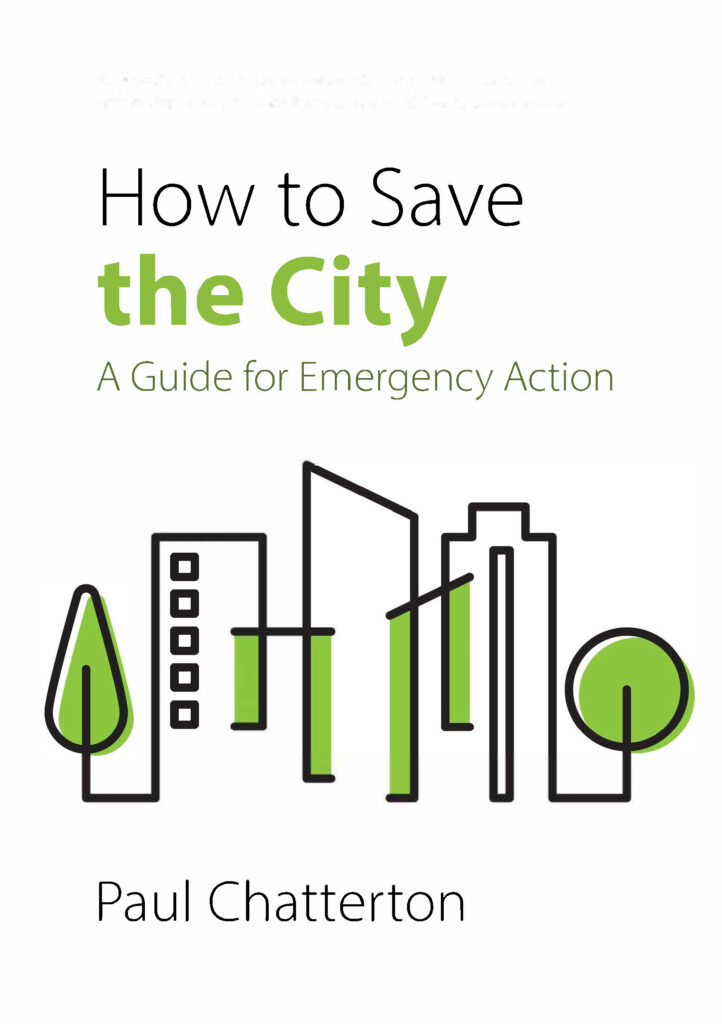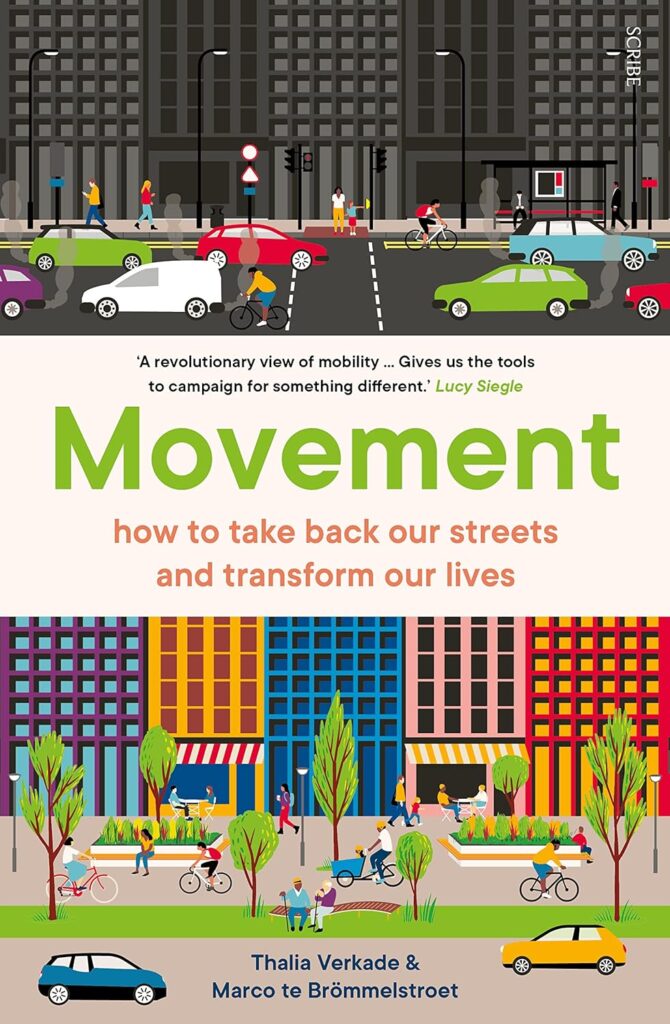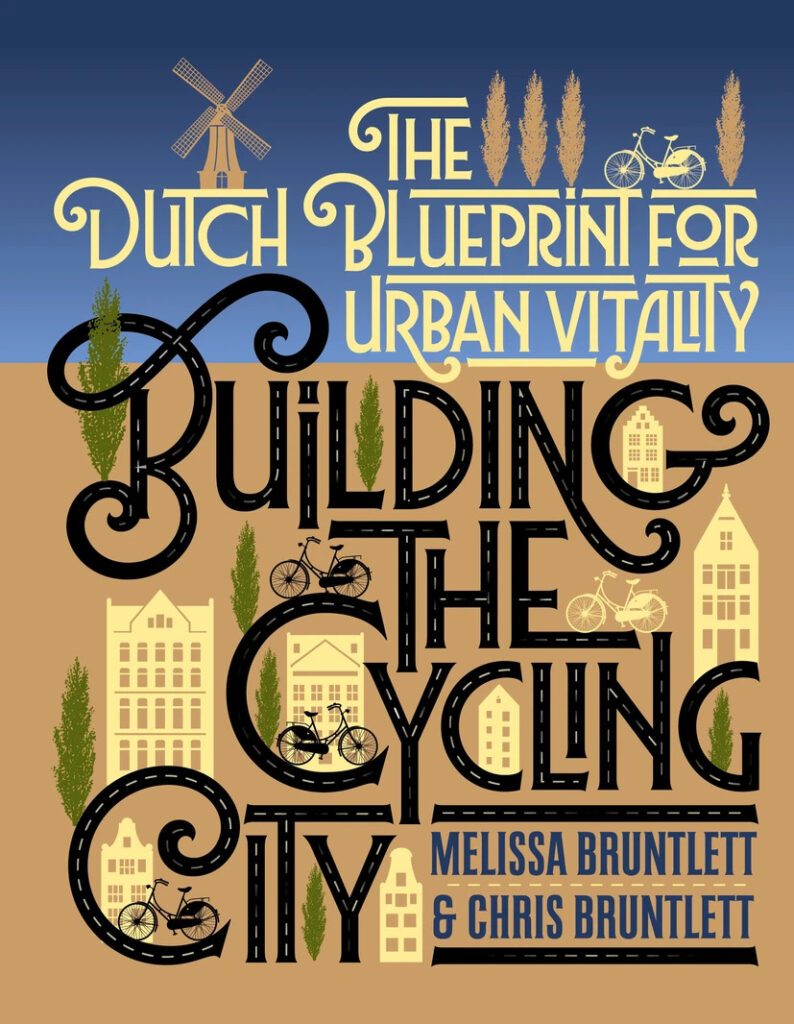“…when streets are for people, everyone wins”

What is it about?
Carfree Cities, by J.H. Crawford, presents a vision for cities with a better quality of life, more social connectedness, and “magic”. While utopian, it provides value in inspiring people to think big. For significant change from the current mobility system, we need to think in new ways. Crawford does this- and in the year 2000, ahead of its time- but still also manages to fall into some existing problematic ways of thinking.
In the preface, Crawford asks if carfree cities possible, argues that they are, and then with the book lays out a plan for how. While he makes a good argument that they are technically possible, would we expect them to happen everywhere? Probably not. The idea of a “car-lite” city is arguably more practical. Nevertheless, Crawford proceeds to make several good points and present compelling images that bring the idea of social life and the human scale in cities to life. He points out that just “improving” what the car has to offer has limits, and that thinking beyond the car opens a whole world. He explains how infrastructure for carfree cities costs less than existing sprawl, and goes into detail in terms of meeting people’s travel needs with public transport.
The book is structured in 3 parts, where in the first he sets the table and uses existing cities as comparisons, in the second he presents his vision for a hypothetical carfree city, and in the third he reflects on making a carfree city happen in practice. Cycling is mentioned in the second part, but only briefly. Having lived in Amsterdam while writing the book, Crawford mentions his experiences with “bicycle chaos”. He also lists problems that he says bicycles have in common with cars. Practically, he has an idea for a wide central boulevard for bicycling (with a specific design). But he also talks about traffic lights at intersections and not making “fast-moving bicyclists” stop. In saying this, he begins to sound like a traffic engineer and a focus on efficiency is revealed.
This shows Crawford working with the constraints of trying to be practical in his pitch- trying to fit into what is acceptable in the current dominant paradigm. In this case however, I think he unfortunately misses out on much of what cycling can offer the idea of a carfree city: social interaction, health, and opportunity for equity, even if it gets “messy”. This goes beyond just efficiency. Much of the work of the Urban Cycling Institute explores this.
What approach does it take?
As stated, Crawford divides the book into three parts. In the first part, he does a variety of things to set the table for part two. He introduces practical concepts such as floor area ratio, and measures in transport such as travel time and costs. He communicates well-documented distinctions between car-oriented areas and non car-oriented areas. In the “Yardsticks for cities” chapter, he compares Venice and Los Angeles. The illustrations and descriptions make you think about what carfree life can be like if you have not been in a place like that before. Crawford also gives a historical perspective on different types of urban development, along with his own commentary. He is very clear about his view on (“wicked”) cars, and he gives a long list of reasons as to why cars are a problem. While he has plenty of good points, the language used at times is exaggerated. The “Sustainable cities” sub-section gives reasons why for carfree is needed in light of the global environmental crisis.
The second part centers around a hypothetical carfree city, which he at points also compares to the existing Los Angeles and Venice. This part contains a vision with lots of engaging illustrations. Crawford goes into quite some detail, and uses pictures of examples in real cities to explain concepts. He goes into logistics and designs of how this hypothetical carfree city would work, based off his knowledge of Venice. But this hypothetical city feels very planned, something just created by an architect, and perhaps that is why Crawford’s overall argument for a carfree city feels like more of a dream.
The final part gives thoughts on the process of actually going carfree. There are some interesting reflections here. The “Some modest proposals” chapter proposes sponsors and locations for the first new carfree city. “Planning carfree cities” also gives food for thought, but at times caters to the efficiency narrative (for example, when it states “A variety of simulations and calculations are required to assure that a carfree area will function as intended”). In the afterword “Making magic”, Crawford gives a description and examples of “magical places”. He says “If we bring magic back into our lives, we will be a happier people”- a captivating statement, but clearly also with limits. Overall, after this part, a lot of questions remain about how politics and actors on the ground work on the idea of carfree cities in existing practice.
In summary, zooming out to the book as a whole, the reader is given a captivating vision with a mix of engaging visuals and practical points. But many questions remain unanswered, and at times Crawford’s visionary approach reverts back to the existing paradigm of traffic engineering and efficiency.
Who might be interested in this book?
Students learning about urbanism, transportation planners, and politicians are some people that could benefit from being exposed to this book. In reading it, think along with the vision but also recognize flaws and generate your own opinions about Crawford’s work. With balance, the piece is great inspiration to dream up your own vision.
Further details
- Academic disciplines: Urban planning, urban design
- Geographical scope: Multiple international cities, with the perspective from an American in Europe
- Relation to cycling: A carfree city of course has implications for the bicycle. However, Crawford’s vision of this city gives only a limited role to cycling. He misses an opportunity to fully integrate cycling into his vision of more social, sustainable, and “magical” cities.
- Reference (APA): Crawford, J. H. (2000). Carfree Cities. International Books.



